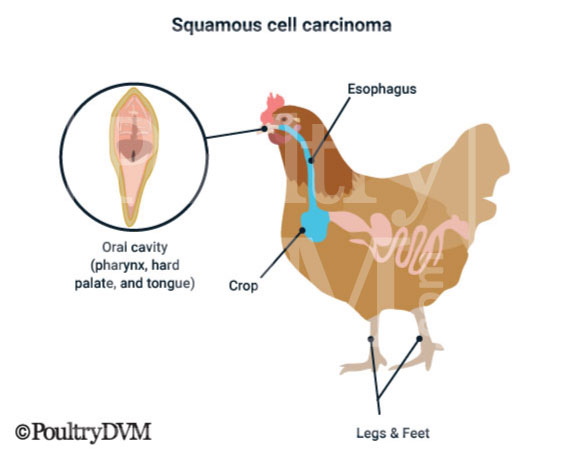Veterinary advice should be sought from your local veterinarian before applying any treatment or vaccine. Not sure who to use? Look up veterinarians who specialize in poultry using our directory listing. Find me a Vet

| Name | Summary | |
|---|---|---|
| Supportive care | Isolate the bird from the flock and place in a safe, comfortable, warm location (your own chicken "intensive care unit") with easy access to water and food. Limit stress. Call your veterinarian. | |
| Surgical excision | ||
| Cryosurgery | ||
| Laser surgery | ||
| Radiation therapy | ||
| Electrochemotherapy | ||
| Photodynamic therapy | ||
| Topical medications | ||
| Supplemental Vitamin C | Has anticancer effects on oral SCC tumors, to induce cell apoptosis | J Zhou et al., 2020 |
| Manuka honey | For birds suffering from oral SCC, application of Manuka honey has been shown beneficial for humans to reduce the effects of oral mucositis resulting from chemotherapy radiation. | D Howlader et al., 2018 |

© 2024 PoultryDVM All Rights Reserved.